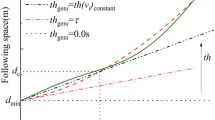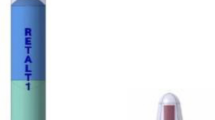Abstract
Considering the problem that the optimal error dynamics can only converge at the terminal time, an impact angle/time constraint missile guidance law with finite-time convergence is designed in this paper, which is based on the pure proportional navigation (PPN) guidance law and the fast terminal error dynamics (FTED) approach. The missile guidance model and FTED equation are given first, and the dynamic equation of impact angle/time error based on PPN is also derived. Then, the guidance law is designed based on FTED, and the guidance error can converge to 0 in a finite time. Furthermore, considering the field of view constraint, the guidance law is improved by using the saturation function mapping method. Finally, a numerical simulation example is given to verify the effectiveness of the guidance law, which shows that the guidance law proposed in this paper can make the missile quickly adjust to the desired states in advance, and effectively relieve the overload saturation pressure of the actuator.
Similar content being viewed by others
Abbreviations
- a IA :
-
Biased term to regulate the terminal impact angle
- a IT :
-
Biased term to regulate the terminal impact time
- a m :
-
Guidance acceleration command of the missile
- a PPN :
-
Pure proportional navigation (PPN) term of the acceleration command
- (e r, e θ):
-
Line-of-sight (LOS) frame
- M :
-
Missile
- n :
-
Design parameter controlling the convergence curvature of the saturation function
- N :
-
Proportional navigation gain
- p, q :
-
Regulation parameters of the nonlinear term, which are positive odd numbers and p > q
- r :
-
Vector of the relative distance between the target and the missile
- r m :
-
Position vector of the missile
- r t :
-
Position vector of the target
- t :
-
Current flying time
- t 0 :
-
Initial time
- t f :
-
Terminal time
- t d :
-
Desired impact time
- (t m, n m):
-
Velocity frame
- t go :
-
Remaining flight time
- T :
-
Target
- v m :
-
Velocity vector of the missile
- (x 0, y 0):
-
Position of the missile at the initial time
- (x f, y f):
-
Position of the missile at the terminal time
- (X, Y):
-
Inertial frame
- α :
-
Coefficient of the linear term
- β :
-
Coefficient of the nonlinear term
- ε :
-
Tracking error
- ε t :
-
Impact time error
- ε ϕ :
-
Impact angle error
- θ m :
-
Velocity leading angle
- θ max :
-
Maximum field of view (FOV) angle of the missile
- σ :
-
LOS angle
- ϕ 0 :
-
Flight path angle of the missile at the initial time
- ϕ d :
-
Desired terminal impact angle
- ϕ f :
-
Flight path angle of the missile at the terminal time
- ϕ m :
-
Flight path angle
References
LIAO X P, LI K B, LIU Y H, et al. Analytical solution of pure proportional navigation guidance law and three-dimensional guidance with impact angle constraint [J]. Journal of Harbin Institute of Technology, 2021, 53(12): 42–50 (in Chinese).
ZHANG Y, TANG S J, GUO J. Adaptive terminal angle constraint interception against maneuvering targets with fast fixed-time convergence [J]. International Journal of Robust and Nonlinear Control, 2018, 28(8): 2996–3014.
XIONG S F, WANG W H, SONG S Y, et al. Extended state observer based impact angle constrained guidance law for maneuvering target interception [J]. Proceedings of the Institution of Mechanical Engineers, Part G: Journal of Aerospace Engineering, 2015, 229(14): 2589–2607.
LEE Y I, KIM S H, LEE J I, et al. Analytic solutions of generalized impact-angle-control guidance law for first-order lag system [J]. Journal of Guidance, Control, and Dynamics, 2012, 36(1): 96–112.
LI K B, LIAO X P, LIANG Y G, et al. Guidance strategy with impact angle constraints based on pure proportional navigation [J]. Acta Aeronautica ET Astronautica Sinica, 2020, 41(S2): 76–85 (in Chinese).
YANG S J, WEN Q Q, ZHOU G Q, et al. Guidance strategy considering strapdown seeker minimum field-of-view angle constraint [J]. Acta Aeronautica ET Astronautica Sinica, 2020, 41(S2): 226–236 (in Chinese).
CHENG Z T, LI J F, PENG G X, et al. Polynomial guidance with constrained impact angle based on Bezier curve [J]. Computing Technology and Automation, 2021, 40(4): 1–7 (in Chinese).
HU Q L, CAO R H, HAN T, et al. Field-of-view limited guidance with impact angle constraint and feasibility analysis [J]. Aerospace Science and Technology, 2021, 114: 106753.
ZHANG Y X. Research on finite-time convergent sliding-mode guidance law [D]. Tianjin: Nankai University, 2013 (in Chinese).
ZHOU H B. Study on guidance law and cooperative guidance for multi-missiles based on finite-time and sliding mode theory [D]. Harbin: Harbin Institute of Technology, 2015 (in Chinese).
JI Y. Research on sliding mode control theory based guidance algorithm [D]. Beijing: Beijing Institute of Technology, 2017 (in Chinese).
JEON I S, LEE J I, TAHK M J. Impact-time-control guidance law for anti-ship missiles [J]. IEEE Transactions on Control Systems Technology, 2006, 14(2): 260–266.
HE S M, LEE C H, SHIN H S, et al. Optimal three-dimensional impact time guidance with seeker’s field-of-view constraint [J]. Chinese Journal of Aeronautics, 2021, 34(2): 240–251.
KANG S, ZHAO H, BU K C, et al. Impact time and angle control guidance law with look-angle constraint [J]. Missiles and Space Vehicles, 2020 (5): 58–61 (in Chinese).
HUA W H, ZHANG Y J, ZHANG J P, et al. Sliding-mode guidance law for attack time cooperation of multi-missiles [J]. Journal of Chinese Inertial Technology, 2018, 26(1): 98–102 (in Chinese).
RUAN C, WEN Q Q, ZHANG W J. Three dimensional impact time control guidance law with field of view constraint [J]. Aero Weaponry, 2021, 28(1): 34–38 (in Chinese).
HE S M, LEE C H, SHIN H S, et al. Optimal error dynamics in missile guidance [M]//Optimal guidance and its applications in missiles and UAVs. Cham: Springer, 2020: 9–39.
HE S M, LEE C H. Optimality of error dynamics in missile guidance problems [J]. Journal of Guidance, Control, and Dynamics, 2018, 41(7): 1624–1633.
YU X H, ZHIHONG M. Fast terminal sliding-mode control design for nonlinear dynamical systems [J]. IEEE Transactions on Circuits and Systems I: Fundamental Theory and Applications, 2002, 49(2): 261–264.
PARK K B, TSUJI T. Terminal sliding mode control of second-order nonlinear uncertain systems [J]. International Journal of Robust and Nonlinear Control, 1999, 9(11): 769–780.
Author information
Authors and Affiliations
Corresponding author
Additional information
Foundation item: the National Natural Science Foundation of China (No. 12002370)
Rights and permissions
About this article
Cite this article
Qin, X., Liu, Y., Li, K. et al. Impact Angle/Time Constraint Guidance Design Based on Fast Terminal Error Dynamics. J. Shanghai Jiaotong Univ. (Sci.) 27, 823–832 (2022). https://doi.org/10.1007/s12204-022-2509-3
Received:
Accepted:
Published:
Issue Date:
DOI: https://doi.org/10.1007/s12204-022-2509-3




